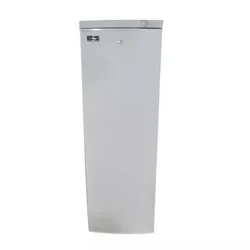The Celfrost BFS 250 is a 250-liter single-door upright freezer designed for storing frozen items like ice cream, cold drinks, and snacks. It features wheels for mobility, a lock for security, and multiple shelves for organized storage.
- 1 year comprehensive warranty (Manufacturing warranty)
- 2 years additional warranty on compressor.



 3253 people have viewed this recently
3253 people have viewed this recently  Delivery By: Nov 23 - Nov 25
Delivery By: Nov 23 - Nov 25 






